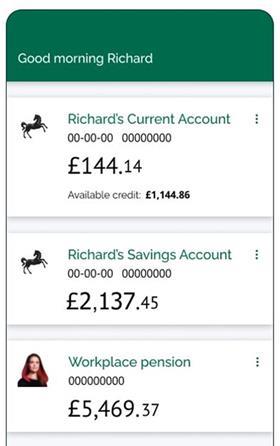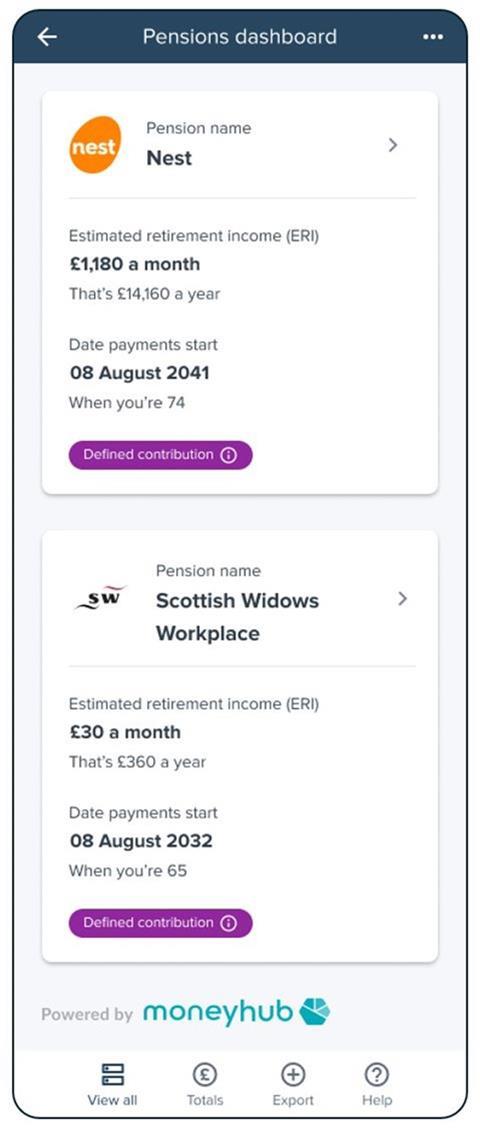Dashboards expert Richard Smith continues his series exploring how some of the leading pension providers are preparing for the introduction of pension dashboards.
Over the nine-month period from August 2024 to April 2025, pension providers and schemes are getting ready to connect their millions of pension records to the pension dashboards ecosystem.
To bring this topic to life, I’m writing a series of nine monthly case study articles on each of my own nine providers’ and schemes’ preparations for dashboards: Dashboards Nine-Nine.
Catch up on Episode 1 here, all about my active defined contribution (DC) pension with Nest.
Pension 2: Scottish Widows
My second active DC pension is with Scottish Widows. Two active pensions? Why?
My current employer auto-enrols workers into Nest for basic minimum contributions, but if staff want to make top-up contributions (and I have), my employer directs these to a Scottish Widows pension.
A bit unusual maybe, but I think you’ll agree it all adds colour and interest to this series.
Easy visibility breeds familiarity

Of all my nine pensions, I think I’m most familiar with my Scottish Widows one.
I’ve been a Lloyds Bank customer for over 40 years and, like millions of other people, I use the Lloyds Mobile Banking app many times a month.
Because Scottish Widows is part of Lloyds Banking Group, my Scottish Widows pension is shown in the Lloyds Bank app. It means I am used to seeing my Scottish Widows pension many times a month, whenever I log in to the Lloyds Bank app.
Seeing my Scottish Widows pension in the app gives a flavour of what commercial dashboards – known legally as “qualifying pensions dashboard services”, or QPDSs – are all about.
The idea of these dashboards is to make it easy for me to see information about all my pensions together, with data always retrieved via a secure government-operated retrieval service, but on an app I already trust and frequently use.
Because of this frequency of use of familiar apps, international experience is that commercial dashboards are by far the most popular with consumers. In Norway, commercial dashboards are used more than 30 times as often as the government dashboard.
Which dashboard will you use?
To help its customers, Scottish Widows has said it intends to launch a dashboard on its app.
Graeme Bold, managing director for workplace and intermediary wealth at Scottish Widows, told me: “Bringing all pensions together on our [dashboard] will allow customers to see, alongside their other assets, what they have and understand if it’s enough for the retirement they would like.
“We’re working with industry bodies, such as the Pensions Dashboard Operators Coalition [DOC], to ensure we hit the ground running with this.”
Because I’m already a Lloyds Bank app user, the Scottish Widows dashboard might become the dashboard I choose to use. But hold that thought until next month’s article!
Thinking about which dashboard to use, I often ask people two questions:
-
How much do you use and trust your favourite banking, pension or money management app?
-
How often do you visit the MoneyHelper website from the Money and Pensions Service?
Which dashboard do you think you’ll use to see all your different pensions together? And why?
What will I see?
Whichever dashboard I choose to use, the information I’ll see about my Scottish Widows pension (and all my other pensions) will be the same – mandated by the Pensions Dashboards Programme (PDP) Design Standards and Data Standards.
The image below shows what a dashboard’s main mandatory page might look like, with a “summary list” of all my pensions. At the top is my Nest Estimated Retirement Income (ERI), covered in last month’s article, with my Scottish Widows ERI shown underneath it.

I have a couple of observations on this display around two important sets of dates.
The first is payment dates. As you can see, my Scottish Widows income is £30 a month, much smaller than my Nest income (£1,180 a month). This isn’t just because my Scottish Widows pot is much smaller than my Nest pot. Look at the “date payments start” for the two pensions.
For my Nest pension, I have changed my selected retirement date to when I am 74, but I’ve not bothered to do this for Scottish Widows as it’s relatively small.
This means Scottish Widows ERI is shown projected to when I am 65 in 2032, whereas my Nest ERI is shown projected to 2041 – including nine additional years of estimated growth.
This is a great example of different pensions having different payment dates. On my independent research tour last summer, I found that continental European dashboards use graphical ‘timeline’ layouts to help explain to users the concept of different payment dates.
Of course, I may draw an income from my pensions before age 65, so all payment dates shown on dashboards are only indicative. Users will need help to understand this.
The second set of key dates are the “as at” dates. Scottish Widows are still considering how best to provide ERI data.
Bold said: “Our aspiration is to provide the last calculated ERI value, which may be as at the last statement date or more recent depending on perhaps a large payment or a transfer in.”
My £30-a-month ERI shown is taken from my last statement, “as at” April 2024 – about five months old. This is much newer than my Nest ERI, which is as at July 2023, or 13 months old.
Not only could different pensions be shown with different notional payment dates (PDP data element 2.305), but they will also almost certainly have different “as at” dates (2.501).
Testing the extent to which consumers of different types care about, and understand, these different dates will be important once they start seeing their real pensions shown on dashboards.
Making decisions
Deciding on the ERI “as at” date is just one of the many mandatory decisions Scottish Widows is making, together with its integrated service provider (ISP), ahead of its connection deadline of 30 April 2025.
“We’ve been working closely with our chosen ISP for some time now, mapping their data input formats to our source system providers and agreeing the contents of each field, and we’re in the process of gathering the reference data we need to provide,” Bold says.
“We are well placed to deliver in eight months’ time.
“On matching, we’ve developed a complex routine to maximise the number of matches we get against the Find Requests. As well as using the main matching criteria, the routine also uses ‘fuzzy matching’ to best maximise hits.
“We’ve taken sample datasets and run the matching criteria to work out the hit rate against the different criteria, aiming to minimise the number of ‘no matches’. We’ve calculated the level of possible matches and will resource our servicing areas against those likely volumes.”
This is a different matching approach to Nest. It will be interesting to understand how these different approaches impact the user experience in live testing.
Bold concluded: “Our ISP has given us a demo of their reports so we can build training materials for our servicing staff.
“Our thoughts are that we will train and equip experienced specialist operatives, who are well versed in pensions dashboards, to deal with customers’ enquiries. We are working closely with industry bodies and regulators to understand potential demand to ensure we’re adequately resourced.”
What might I do next?
For the first time, dashboards – whether it’s the MoneyHelper one from government, or a dashboard delivered through one of my favourite apps – will show me my Nest pension alongside my Scottish Widows pension.
How might I react when I see this? What (if any) potential actions might this display prompt in my mind?
Before answering that, we need to understand what other pensions I will see on my dashboard, and how these might impact what I decide to do next. Episode 3 in October will continue the story.
Richard Smith is an independent pensions dashboards consultant.
Dashboards Nine-Nine: How Nest is preparing for connection day
- 1
- 2
 Currently reading
Currently readingWhat Scottish Widows’ app tells us about the future of dashboards
- 3
- 4
- 5
- 6
- 7
- 8
- 9

























